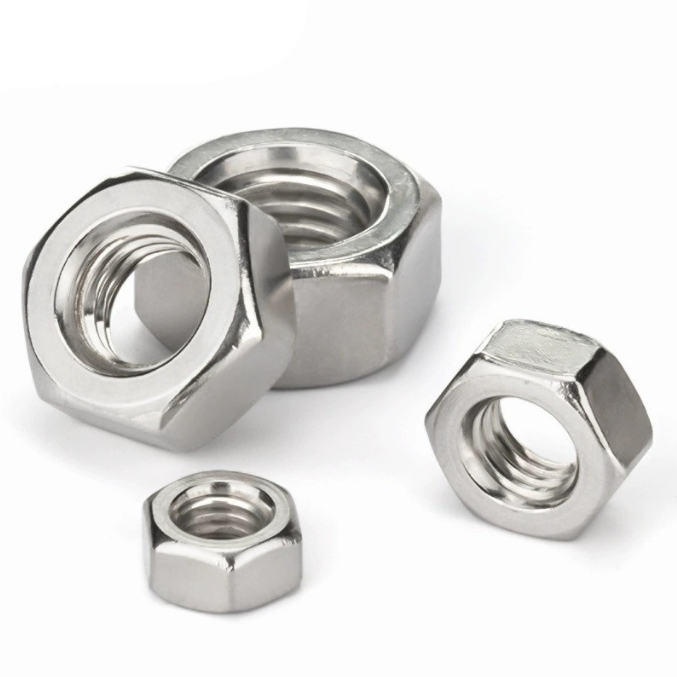

10mm x 1.25 Flange Nut Specifications and Applications Guide for Fastening Solutions
Nov . 10, 2024 22:10 Back to list
10mm x 1.25 Flange Nut Specifications and Applications Guide for Fastening Solutions
Understanding the 10mm x 1.25 Flange Nut A Comprehensive Overview
In the realm of machinery and construction, fasteners play a critical role in ensuring the cohesiveness and stability of structures and equipment. Among these essential fasteners, the 10mm x 1.25 flange nut stands out due to its unique design and versatile applications. This article delves into the characteristics, uses, and advantages of the 10mm x 1.25 flange nut, shedding light on why it is preferred in various industries.
What is a Flange Nut?
A flange nut is a type of nut that features a built-in circular flange at one end. This flange not only enhances the nut's load distribution but also serves a functional role in preventing the nut from loosening over time. The flange provides a larger surface area that can bear against the base material, thus offering increased resistance to stripping and vibration. The 10mm x 1.25 designation refers to the diameter and thread pitch of the nut—specifying that it fits on a bolt or screw with a 10mm diameter and a 1.25mm thread pitch.
Key Features of the 10mm x 1
.25 Flange Nut1. Material Composition Flange nuts are typically made from a variety of materials, including stainless steel, carbon steel, and various alloys. Each material offers different benefits, such as corrosion resistance, strength, and weight, allowing engineers and designers to select the most suitable option for their specific applications.
2. Design The flange on the nut creates a larger bearing surface, which is crucial when fastening softer materials or when there is a risk of the nut being exposed to lateral loads. This design lowers the risk of the nut sinking into the surface it is affixed to, providing a reliable hold.
3. Thread Specifications The 10mm x 1.25 specification means the nut is suited for bolts with a 10mm diameter and a 1.25mm thread pitch. This precision in sizing ensures compatibility with standardized bolts, making it an efficient choice for assembly lines and construction projects where uniformity is key.
Applications and Uses
The 10mm x 1.25 flange nut is widely utilized across various sectors
10mm x 1.25 flange nut

- Automotive Industry These nuts are commonly found in car assembly, particularly in applications where vibration resistance is crucial, such as in engine components and suspension systems.
- Construction In building frameworks, flange nuts provide the vital connection between steel beams and other structural elements, ensuring safety and durability.
- Manufacturing and Machinery Equipment assembly often requires reliable fastening solutions. The flange nut’s ability to distribute load effectively makes it an ideal component in many machines and tools.
Advantages of Using 10mm x 1.25 Flange Nuts
1. Improved Stability The flange design significantly reduces the likelihood of loosening due to vibration, which is particularly beneficial for high-stress applications.
2. Increased Load Distribution By spreading the load across a wider area, flange nuts minimize the risk of damage to components, enhancing the longevity and reliability of assemblies.
3. Ease of Use Flange nuts are easy to install and remove, requiring no additional washers for load distribution, thus simplifying the assembly process.
4. Versatility Their compatibility with a range of materials and environments—particularly in both indoor and outdoor applications—makes flange nuts a go-to choice for engineers.
Conclusion
The 10mm x 1.25 flange nut is an exemplary fastener that combines strength, stability, and versatility. Its unique design helps mitigate common fastening challenges, ensuring that structures and machinery remain secure and effective. Whether in automotive, construction, or manufacturing industries, the 10mm x 1.25 flange nut continues to be an indispensable component in the world of fasteners, illustrating the importance of thoughtful design in engineering solutions.
Latest news
-
Premium Fasteners Manufacturer | AI-Driven Solutions
NewsAug.01,2025
-
Hot Dip Galvanized Bolts - Hebei Longze | High Strength, Corrosion Resistance
NewsAug.01,2025
-
High-Strength Hot Dip Galvanized Bolts - LongZe | Corrosion Resistance, Custom Sizes
NewsAug.01,2025
-
Best Self Tapping Screws for Drywall - Fast & Secure Installation
NewsJul.31,2025
-
High-Strength Hot Dip Galvanized Bolts-Hebei Longze|Corrosion Resistance&Customization
NewsJul.31,2025
-
Hot Dip Galvanized Bolts-Hebei Longze Metal Products|Corrosion Resistance&High Strength
NewsJul.31,2025

